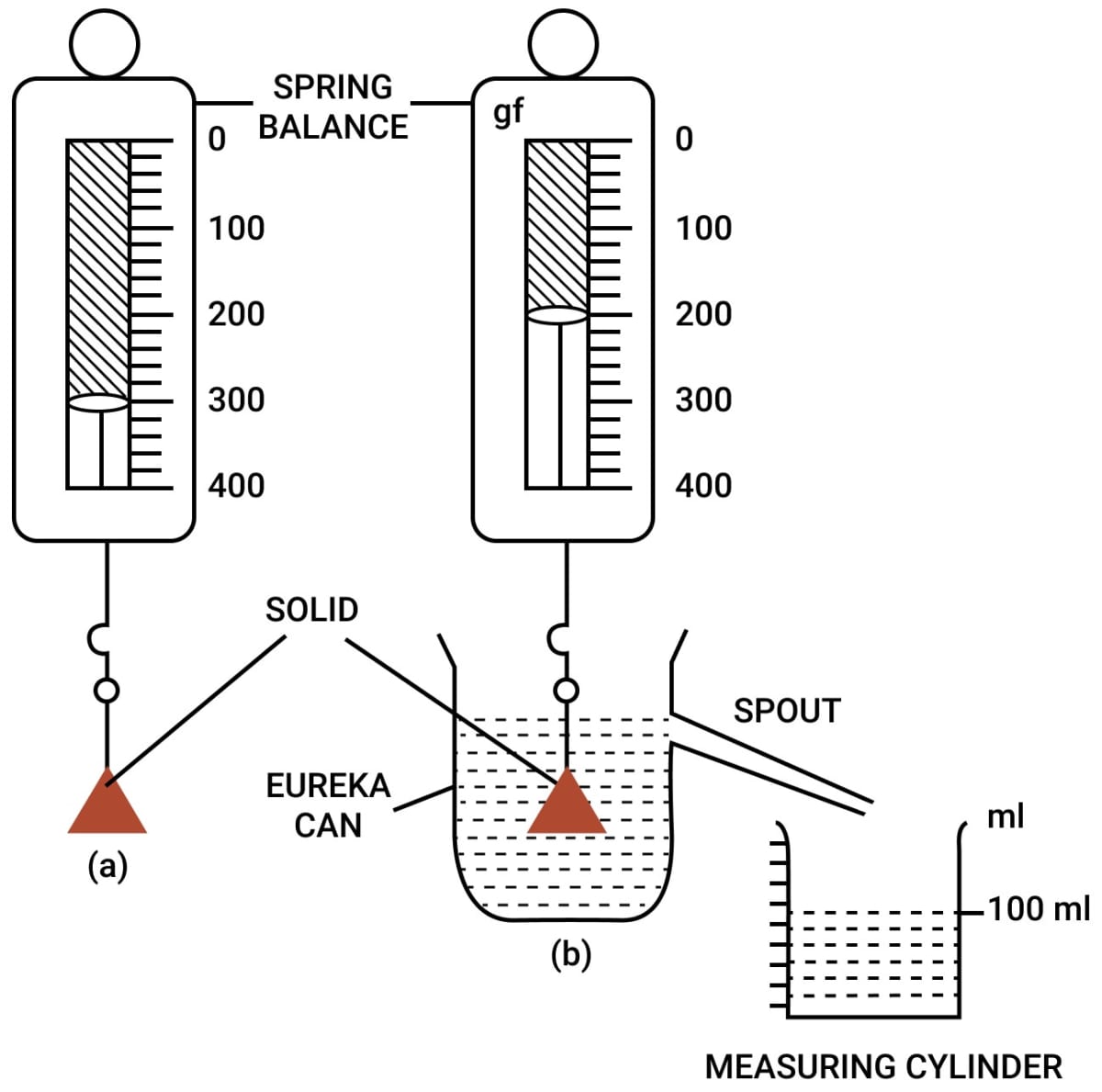Physics
Answer
Experiment —

Take a solid (say a metallic piece). Suspend a solid by a thin thread from the hook of a spring balance. Note it's weight. Now take a eureka can and fill it with water to it's spout. Arrange a measuring cylinder below the spout of the eureka can.
Now, immerse the solid gently into water of the eureka can. The water displaced by it gets collected in the measuring cylinder, as shown in figure. When water stops dripping through the spout, note the weight of the solid and the volume of water collected in the measuring cylinder.
As shown in figure, the solid weighs 300 gf in air and 200 gf when it is completely immersed in water. The volume of water collected in the ,measuring cylinder is 100 ml i.e., 100 cm3.
Therefore, loss in weight = 300gf - 200gf = 100gf [Equation 1]
Volume of water displaced = Volume of solid = 100 cm3
Since, density of water = 1 g cm-3
Therefore, weight of water displaced = 100 gf [Equation 2]
From eqns. (i) and (ii)
Weight of water displaced = Upthrust or loss in weight.
Thus, the weight of water displaced by a solid is equal to the loss in weight of the solid. This verifies Archimedes' principle.
Related Questions
Describe an experiment to show that a body immersed in a liquid appears lighter than it really is.
A body held completely immersed inside a liquid experiences two forces (i) F1, the force due to gravity and (ii) F2, the buoyant force. Draw a diagram showing the direction of these forces acting on the body and state the conditions when the body will float or sink.
What do you understand by the term upthrust of a fluid? Describe an experiment to show it's existence.
Prove that the loss in weight of a body when immersed wholly or partially in a liquid is equal to the buoyant force (or upthrust) and this loss is because of the difference in pressure exerted by liquid on the upper and lower surfaces of the submerged part of the body.